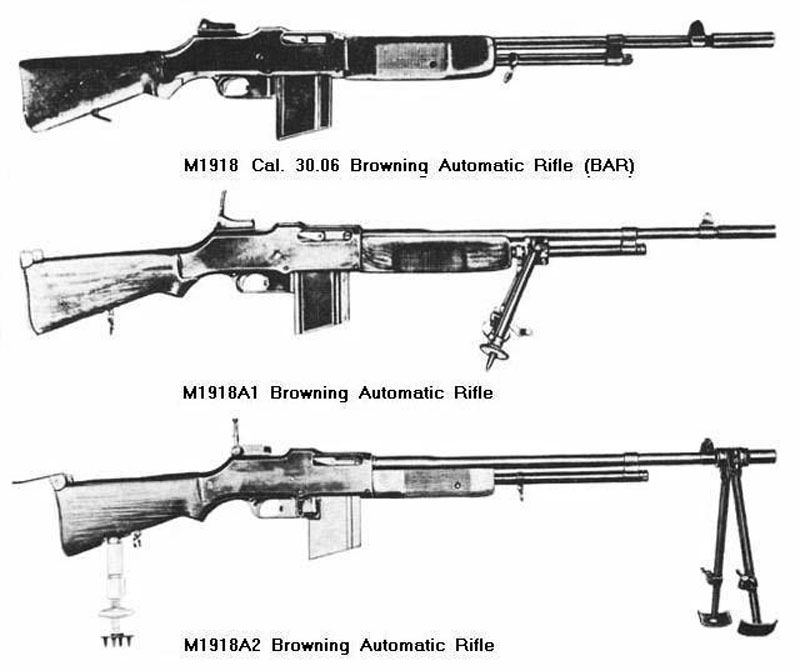Browning Automatic Rifle – a rifle capable of fully automatic fire, designed by the firearm maestro, John Moses Browning. The rifle, firing the Springfield .30-06 cartridge, saw action all the way from the last months of the First World War to the conflict in the former Yugoslavia.
The Browning Automatic Rifle (BAR) was a family of weapons used by the United States and a large number of other countries during the 20th Century. The primary version was the M1918 and its variants, chambered for the .30-06 rifle cartridge and designed by John M Browning in 1917 as a replacement for the US Army's French-designed Chauchat and M1909 Benet-Mercie machineguns. Originally designed to be an automatic rifle, carried by a sling over the shoulder and fired from the hip – a concept called 'walking fire'.
Over time however, the weapon gradually became to be used in a light machinegun role, especially when later variants came equipped with a bipod, although having a 20-round box was a major limitation. The M1918 is a selective fire, air-cooled, gas-operated automatic rifle, being cycled by propellant gases that are bled off through a vent in the barrel. The bolt is locked by a rising bolt lock and the gun fires from an open bolt. The bolt contains the extractor which is spring-powered while there is a fixed ejector in the trigger group. The weapon's barrel is screwed into the receiver and not easily detachable.
The weapon feeds via a double-column 20-round magazine, although 40-round magazines were available when in the anti-aircraft role (up until 1927). It has a cylindrical flash suppressor fixed to the end of the barrel, a fixed wooden butt stock and closed-type iron sights, consisting of a forward post and rear leaf sight, adjustable to between 100 and 1,500 yards.
Specifications (M1918A2) –
Calibre: .30-06 (7.62x63mm)
Length: 1,215mm (47.8in)
Length of Barrel: 610mm (24in)
Muzzle Velocity: 860mps (2,822fps)
Rate of Fire: Approximately 350 or 550rpm
Feed: 20-round box magazine
You can find out more about the BAR in this article.

